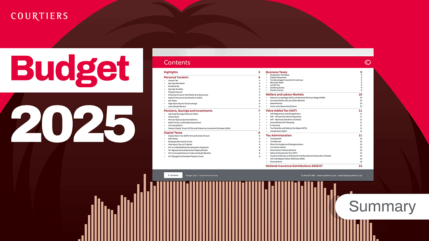We grill Courtiers Chief Investment Officer, Gary Reynolds, on the evolving role of UK government bonds – particularly long-dated gilts – in modern portfolios in the first of our podcasts and in video format.
Missed the articles we talk about? You can read the summaries below, or link through to read the whole pieces here:
1. “It’s Time to Look at Long-Dated Bonds” (published 19th August, 2025)
In this piece, Gary challenges the long-standing equity bias in portfolio construction by revisiting the case for long-dated gilts. Drawing on historical data, he outlines four key drivers of gilt yields:
- Short-term interest rates: closely tied to Bank of England policy.
- Expected inflation: currently forecast around 3.1% over the next decade.
- Term premium: the additional yield for holding longer maturities.
- Diversification: historically low correlation with equities, though this has shifted post-2023.
Despite gilts’ historical underperformance versus equities, Gary argues that long-dated bonds are becoming more attractive due to restored term premiums and higher yields. He also warns against assuming gilts are always “safe,” especially in inflationary environments.
Key takeaway: Long-dated gilts may now offer better value and diversification potential if inflation remains under control and rates fall.
2. “Should Gilt Investors Fear the UK Government’s Burgeoning Debt?” (published 19th September, 2025)
Here, Gary tackles the alarmist narrative around the UK’s rising public debt, which has grown from £340 billion in 1997 to £2.82 trillion in 2024 (730% in 27 years). He reframes the debate by explaining that:
- Government deficits are the mirror image of private sector savings.
- There is no historical correlation between high debt-to-GDP ratios and rising bond yields.
- Productivity growth – not austerity – is the key to reducing debt burdens sustainably.
- Inflation can reduce debt-to-GDP but at the cost of eroding bondholder returns.
He uses 300 years of data to show that high debt levels have often coincided with low interest rates, not high ones.
Key takeaway: Rising government debt isn’t inherently bad for gilt investors – context, productivity, and inflation matter more.













